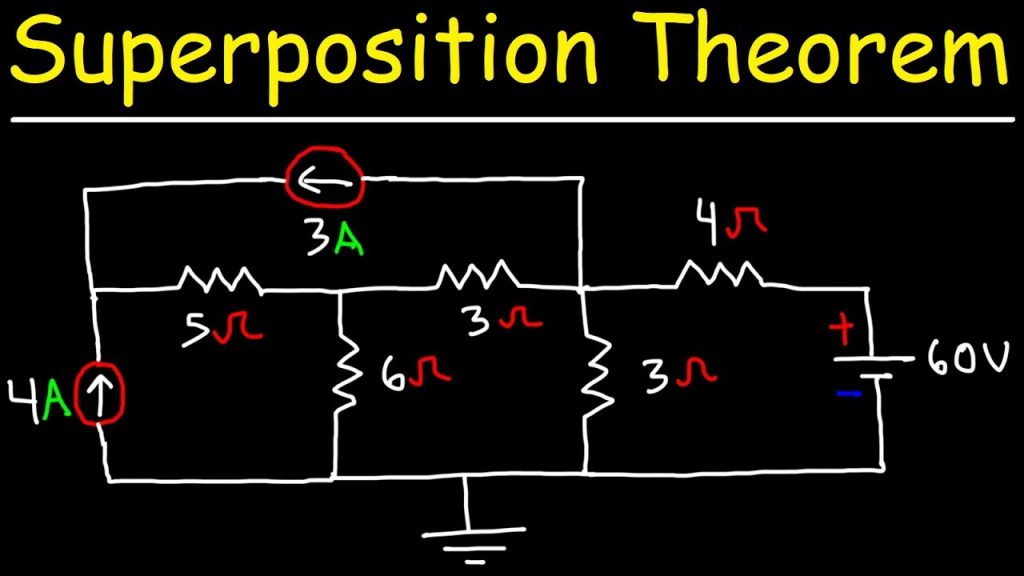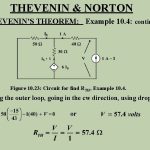Superposition Principle

(a)

(B)

(C)
Figure 1: The circuits showing the linearity of resistors.
Most basic electronic circuits are composed of linear elements. Linear elements are circuit elements which follow Ohm’s Law. In Figure 1 (a) with independent voltage source, V1, and resistor, R, a current i 1 flows. The current i 1 has a value according to Ohm’s Law. Similarly in Figure 1 (b) with independent voltage source, V2, and resistor, R, a current i 2 flows. In Figure 1 (c) with independent voltage sources, V1 and V2, and resistor, R, a current i flows. Using Ohm’s Law equation 1 is reached. If some simple algebra is used then equation 2 is reached. But V1/R has a value i 1 and the other term is i 2 this gives equation 3. This is basically what the Superposition Theorem states.

The Superposition Theorem states that the effect of all the sources with corresponding stimuli on a circuit of linear elements is equal to the algebraic sum of each individual effect. Each individual effect is calculated by removing all other stimuli by replacing voltage sources with short circuits and current sources with open circuits. Dependent sources can be removed as long as the controlling stimuli is not set to zero. The process of calculating each effect with one stimulus connected at a time is continued until all the effects are calculated. If kth stimulus is denoted sk and the effect created by sk denoted ek.

The steps for using superposition are as follows:
1. Calculate the effect of each source in turn with all other independent voltage sources short circuited and independent current sources open circuited.
2. Sum these effects to get the complete effect.
Note: the removal of each source is often stated differently as: replace each voltage source with its internal resistance and each current with its internal resistance. This is identical to what has been stated above. This is because a real voltage source consists of an independent voltage source in series with its internal resistance and a real current source consists of an independent current source in parallel with its internal resistance.



Comments are closed